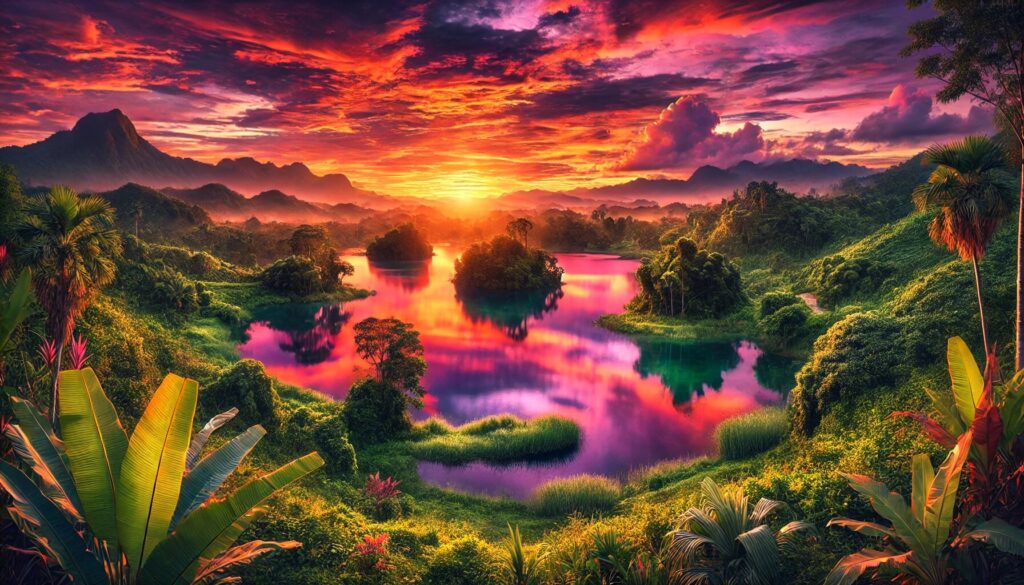Introduction to HDR Photography
High Dynamic Range (HDR) photography is a technique that combines multiple exposures to capture the full spectrum of light and detail in a scene. Unlike traditional photography, which may struggle to balance highlights and shadows, HDR photography ensures that every detail—no matter how bright or dark—is visible. Whether you’re photographing stunning landscapes, intricate portraits, or vibrant real estate interiors, mastering HDR can elevate your work.
In this article, we’ll dive into HDR photography, examples across genres, and actionable tips to help you capture breathtaking images.
What is HDR Photography?
HDR photography is a post-processing technique that merges several photographs taken at different exposure levels into one dynamic image. This process allows photographers to recreate scenes as the human eye perceives them, with balanced light and detailed highlights and shadows.
How Does HDR Work?
- Capture Multiple Exposures: Take a series of images with varying exposures—one underexposed, one correctly exposed, and one overexposed.
- Merge the Photos: Use editing software like Adobe Lightroom or Photomatix to blend these images into one HDR photo.
- Adjust and Refine: Fine-tune the final image to achieve the desired balance of detail and realism.
When to Use HDR Photography
- High Contrast Scenes: Perfect for sunsets, sunrises, or brightly lit interiors.
- Landscapes: Capture both the sky’s brilliance and the earth’s texture.
- Real Estate: Highlight the details of interiors and exteriors simultaneously.
HDR Landscape Photography: Bringing Nature to Life
HDR photography is a game-changer for landscape enthusiasts, as it allows you to encapsulate the vibrancy of the natural world.
Essential HDR Landscape Tips
- Choose the Right Time: Shoot during the golden hour for softer light and richer colors.
- Use a Tripod: Ensures stability during the multiple exposures.
- Bracket Your Shots: Take at least three exposures to capture the full light range.
- Keep the ISO Low: Minimize noise for crisper images.
Examples of HDR Landscape Photography
- A serene lake reflecting a fiery sunset, with every cloud detail preserved.
- A forest scene with dark undergrowth and sunlight piercing through the canopy.
Software Suggestions
- Adobe Lightroom: Best for natural HDR effects.
- Aurora HDR: Excels in creating vibrant, high-quality HDR landscapes.
HDR Photography for Portraits: Capturing Every Detail
While HDR is typically associated with landscapes, it can also enhance portraits by emphasizing fine details and adding depth.
Tips for HDR Portrait Photography
- Balance Light and Shadows: Avoid over-processing to maintain a natural look.
- Focus on the Subject: Use a wide aperture to blur the background while keeping the subject sharp.
- Adjust Skin Tones: Ensure the HDR effect doesn’t make skin tones appear unnatural.
When to Use HDR in Portraits
HDR is best for outdoor portraits, where natural lighting creates dynamic contrasts between the subject and the environment. For instance, a subject illuminated by soft sunlight with a dramatic sky in the background can be stunning.
HDR Photography Examples Across Genres
Looking for inspiration? Here are some standout HDR photography examples:
- Urban Landscapes: Night cityscapes with glowing lights and shadowed alleys.
- Wildlife: Animals in contrasting environments, like a brightly lit savanna with dark storm clouds overhead.
- Architectural Wonders: Highlighting intricate designs in historical buildings or modern skyscrapers.
HDR Real Estate Photography Tips: Sell the Dream
HDR photography is invaluable for real estate, as it brings out the best in property listings by showcasing both the interior and exterior in vivid detail.
Top Tips for Real Estate HDR
- Shoot in Natural Light: Open curtains and avoid harsh artificial lighting.
- Bracket Exposures: Use at least three images to balance windows’ brightness and shadowy corners.
- Post-Process Thoughtfully: Avoid over-saturation to maintain a realistic look.
Tools for Real Estate HDR Photography
- Photomatix Pro: A favorite for its batch-processing capabilities.
- HDR Efex Pro: Ideal for refining details in interiors.
Example: An HDR image of a living room with bright window views, crisp furniture details, and a cozy ambiance.
Photography HDR: Common Mistakes and How to Avoid Them
Despite its potential, HDR photography can go wrong if overdone. Here’s how to avoid common pitfalls:
Mistakes to Avoid
- Over-Processing: Too much HDR can result in an unrealistic, cartoonish look.
- Ignoring Composition: HDR enhances images but doesn’t fix poor framing.
- Skipping a Tripod: Leads to misaligned exposures and blurred results.
Tips to Master HDR
- Aim for subtlety.
- Always shoot in RAW format for maximum editing flexibility.
- Test different HDR software to find your style.
FAQs
What is HDR photography used for?
HDR photography is used to capture high-contrast scenes where both bright and dark details need to be visible.
Do you need special equipment for HDR photography?
Not necessarily. A DSLR or mirrorless camera with bracketing features, a tripod, and post-processing software are sufficient.
Is HDR photography suitable for beginners?
Yes! With practice and the right tools, beginners can achieve impressive results.
What software is best for HDR photography?
Popular choices include Adobe Lightroom, Photomatix Pro, and Aurora HDR.
How do I create natural-looking HDR photos?
Focus on balancing light and shadow without over-processing or exaggerating colors.
Can you use HDR for action shots?
HDR works best for still subjects. Moving subjects may cause ghosting in merged images.
Conclusion
HDR photography opens up endless possibilities for photographers by overcoming the limitations of traditional techniques. Whether you’re shooting breathtaking landscapes, detailed portraits, or showcasing real estate photography, HDR ensures that every detail shines through. With the right tools and a touch of creativity, you can transform your images into stunning works of art.
Now that you’re equipped with the knowledge, grab your camera and start exploring the world of HDR photography!
